As the second most visited park in Kenya, Amboseli National Park stands out as an iconic natural sanctuary. It is renowned for its majestic elephants that move gracefully against the backdrop of the spectacular Mount Kilimanjaro.
Curious about what a day of safari at Amboseli National Park looks like? I’ll share the details in the article below 🐘
Amboseli National Park in a few words
Located in the Great Rift Valley, about 250 km southeast of Nairobi, Amboseli National Park is Kenya’s oldest park and the country’s second most visited park after Maasai Mara.
Originally a home to Maasai tribes who grazed their livestock, the reserve was designated as a national park in 1974, which led to various tensions. In 1980, it was classified as a biosphere reserve by UNESCO. Like most parks and reserves in Kenya, it is managed by the Kenya Wildlife Service.
Stretching along the border of Tanzania, the park covers an area of 392 km², making it one of the smallest parks in Kenya.
➜ The small size of Amboseli National Park is actually an advantage for safaris, as it makes the experience less challenging compared to, for example, Maasai Mara. The shorter travel times allow for longer periods of animal observation. Additionally, it is one of the few national parks where visitors can freely explore (self-drive) during the dry season, provided they have a suitable vehicle and follow the regulations.
The park is mainly composed of plains with sparse vegetation, providing an exceptional viewpoint of Africa’s highest peak, Mount Kilimanjaro (5895 meters above sea level). The park got its name from the Maasai term amboseli meaning “salty dust,” referring to the large lake that is almost dried up in the center of the plain. The eternal snows flowing from Kilimanjaro create vast wetland areas that are greatly appreciated by animals and are characteristic of the Amboseli landscape.
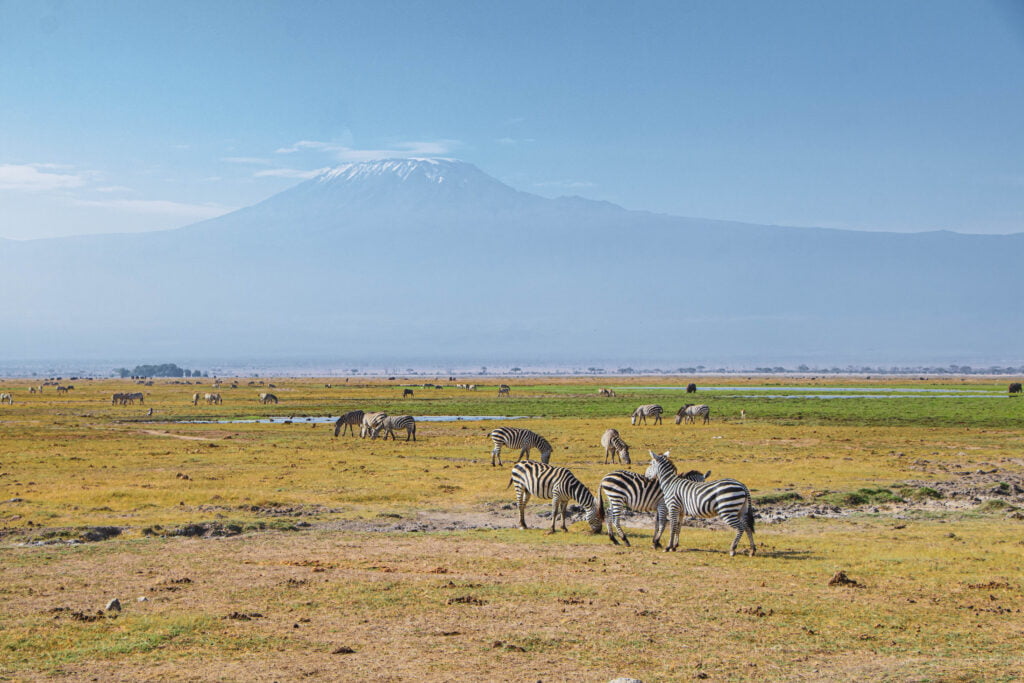
Which animals can you see at Amboseli National Park?
The wildlife in the park is remarkable given its small size. Zebras, wildebeests, antelopes, warthogs, hippos, and hundreds of birds often gather near the marshes. The giraffes move from one acacia tree to another, both for food and to seek shade from the sun.

The number of felines and carnivores has decreased in Amboseli, but with luck, it is still possible to spot the Big Five! While there are around sixty lions in the park, leopards are much more elusive, and black rhinoceroses are often seen only when they move between Kenya and Tanzania.
But Amboseli National Park is primarily known as the kingdom of elephants, which never fails to captivate observers with the Kilimanjaro in the background!

Thanks to the efforts of researchers and local communities, the elephant population has withstood intense periods of poaching in East Africa and doubled in Kenya over the past thirty years. Today, there are over 1800 elephants in Amboseli National Park, compared to 600 in 1972.
Safari day at Amboseli National Park
Just like our early morning safari in Maasai Mara, the wake-up call comes early at AA Lodge Amboseli. And the summit of Mount Kilimanjaro, which was not visible when we arrived in the evening, greets us during breakfast 🤩

As soon as we left, a huge elephant seemed to point us towards the park 🐘 That alone got the excitement level up in the cars!


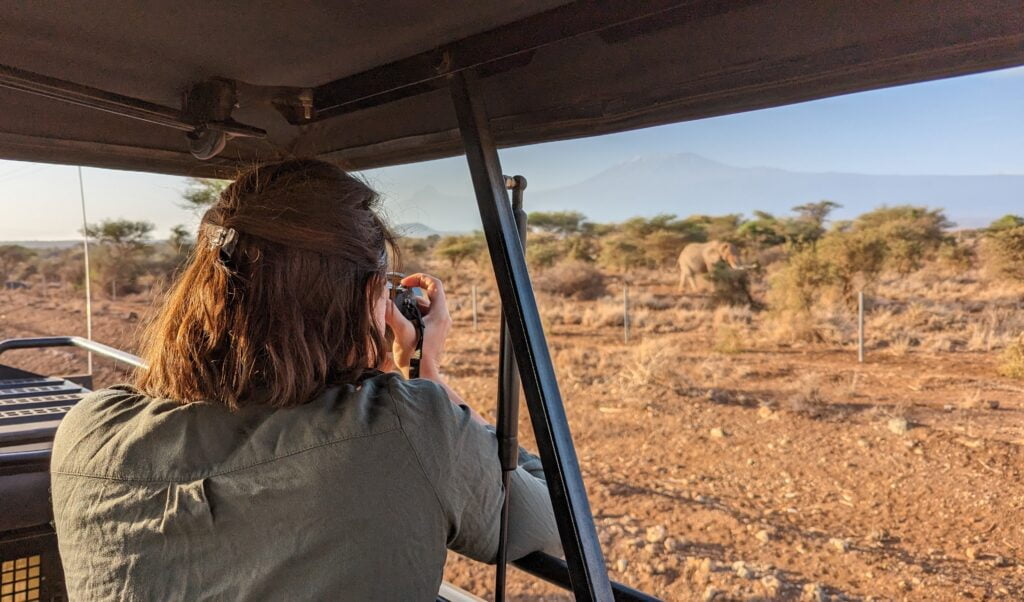
Since the lodge is just 10 minutes away from Kimana Gate, we are among the first to arrive and purchase our tickets.

As soon as we crossed the gates, we discovered several hyenas feasting. From a distance, it’s hard to see what’s on the menu, but they’re not wasting any time!

Giraffes and gazelles are also ready for breakfast.



You don’t have to travel far to notice the striking contrast between the landscapes of the Masai Mara and Amboseli National Park. Here, instead of rolling meadows, you’ll find a vibrant marshy landscape teeming with life. Elephants, of course, but also zebras, wildebeests, hippos, and an abundance of birds.







A huge buffalo enjoys a mud bath, but gets disturbed by a curious bird.

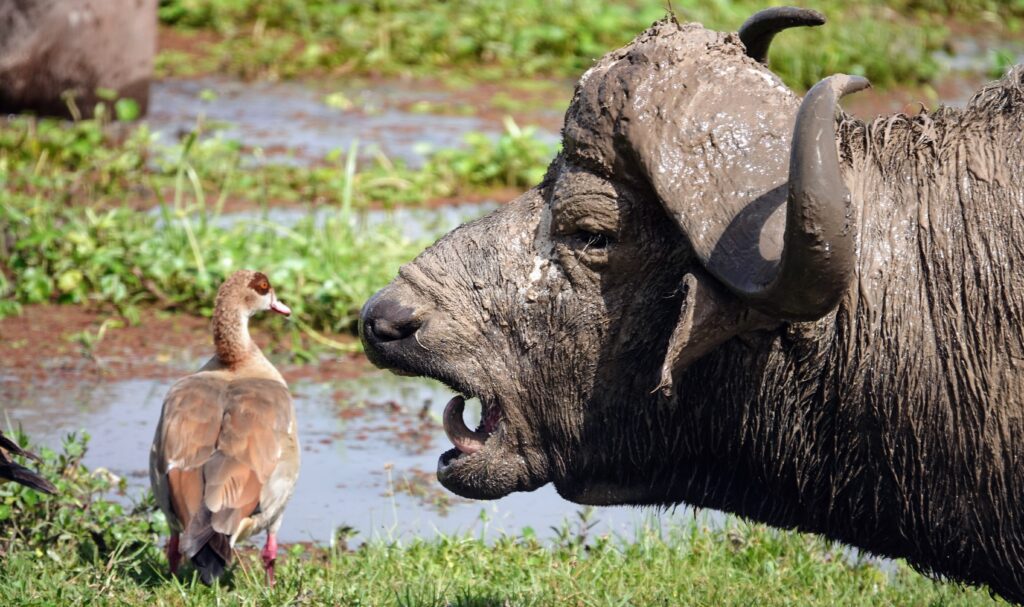
Comfortably at ease, a herd of elephants gracefully navigates between the cars. It’s a great opportunity to observe them up close…


In the tall grass, there is a hint of movement that grabs our attention. There is an air of excitement. Could this be the first time we spot a feline in Amboseli? Even with binoculars, uncertainty remains…
A group of zebras catches the eye in the distance. Just behind them, three lionesses follow closely. And from the bushes emerges a male lion, moving forward with deliberate steps, seemingly unconcerned.
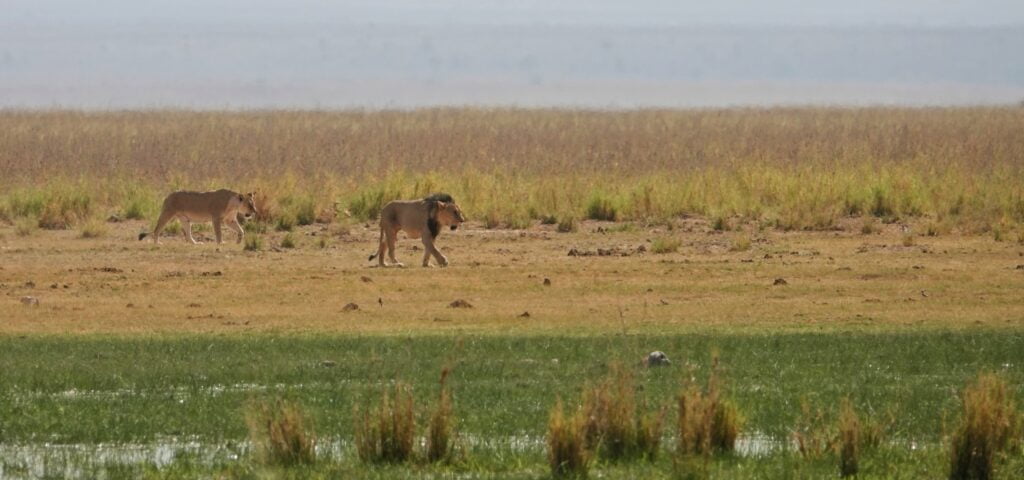
Our driver conveyed the message over the radio, attracting a crowd of cars who were eager to see the spectacle. In the midst of swaying grass, several lionesses rested while a resolute lion stared at a group of motionless zebras.

Minutes pass, nothing moves. It’s unlikely that the lions will attempt an attack in this scorching heat. Disappointed, we continue our journey towards Observation Hill.
The Observation Hill in Amboseli is the highest point and is believed to be a former volcanic crater. Its flat summit serves as an observation platform, providing a 360-degree view of the park. It’s a perfect spot for a picnic break or a family portrait with the breathtaking Kilimanjaro in the background.
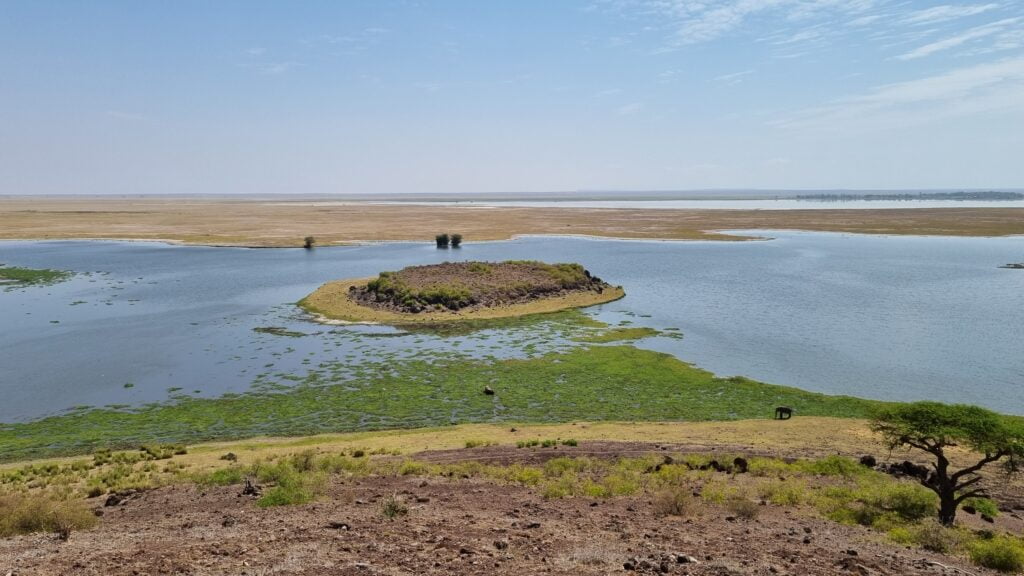


It is also one of the few places where one can exit their vehicle for a restroom break 😅

Lunch is scheduled at the lodge. A family of warthogs and numerous flamingos accompany our journey back…



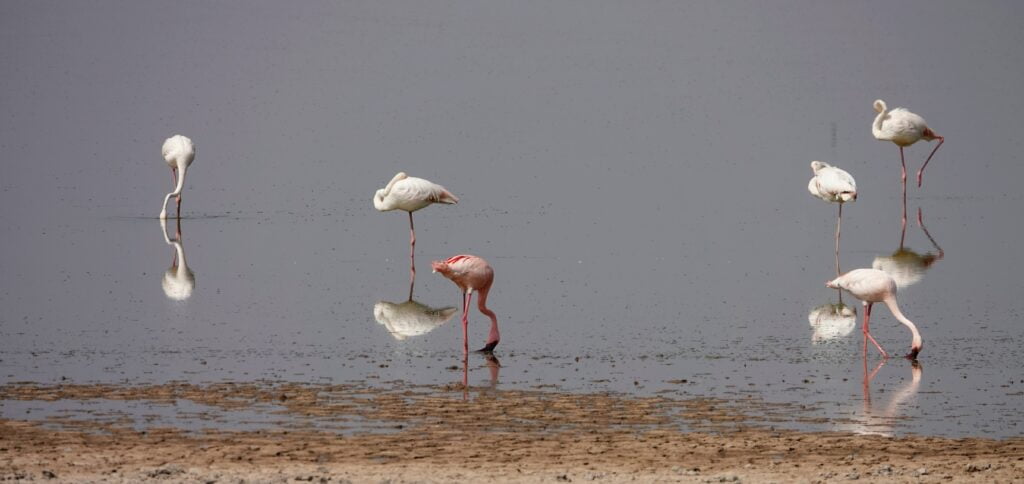
After a short nap and a refreshing dip in the lodge pool, we return to the park in the late afternoon. The elephants are still abundant, but Mount Kilimanjaro is now hidden behind the clouds.

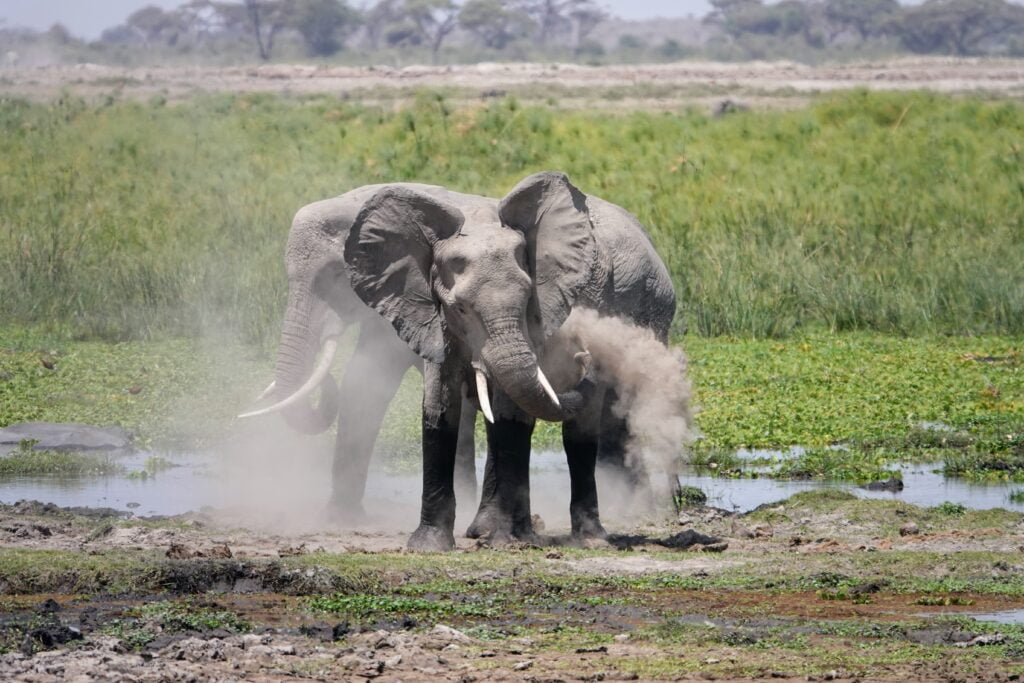



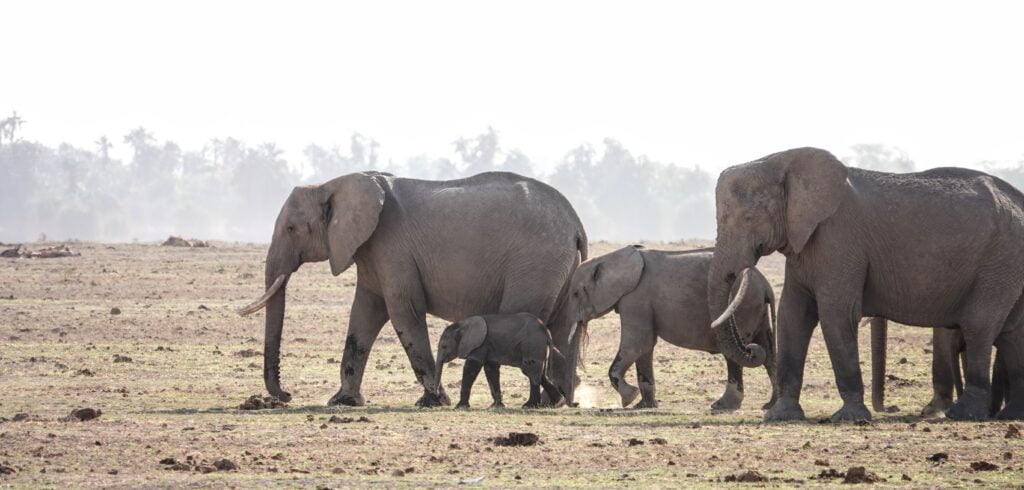

The sight of two lions near a pond fills us with hope for an equally magical end to the day as we experienced in the Masai Mara. However, we’re unable to get any closer. We take a few minutes to observe from a distance before heading back 👀

The light gently fades over the marshes of Amboseli.


The final stretch of the track. The ultimate safari. We truly had an awe-inspiring experience.

Practical information
- Amboseli National Park is open every day from 6:00am to 7:00pm.
- The fee for Amboseli National Park is $60 per adult and $35 per child (ages 3 to 17). These rates are valid for a 24-hour period.
- If you choose a self-drive safari, you will also need to pay an entry fee for your vehicle (300 KSh for a car with up to 6 passengers).
- If you plan to visit Amboseli National Park on a self-drive, make sure to get a park map before arriving as they are not available at the entrance gates.
- Rules are in place in all of Kenya’s national parks to protect wildlife, flora, and ensure visitor safety:
- In the presence of animals, it is important to maintain a minimum distance of 25 meters.
- The speed of vehicles must not exceed 65km/h.
- Do not exit the vehicle except at designated observation points.
- Noise should be minimized when approaching animals.
- Feeding animals is prohibited.







